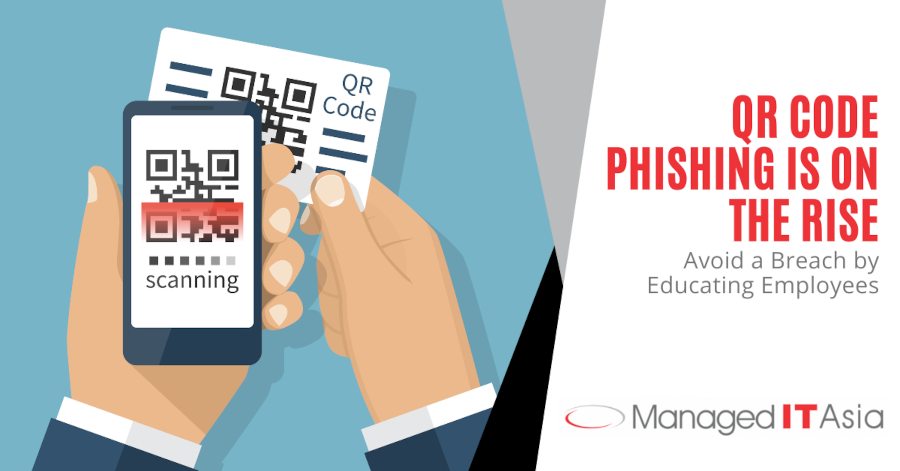In the ever-evolving landscape of cybersecurity threats, phishing attacks remain a persistent menace. However, cybercriminals are continually refining their tactics to evade detection and exploit vulnerabilities. One such tactic that is gaining traction is QR code phishing. As QR codes become increasingly prevalent in various aspects of daily life, from digital payments to event registrations, they have also become a new vector for phishing attacks. In this article, we’ll delve into the rising threat of QR code phishing and explore strategies to educate employees and mitigate the risks.
Understanding QR Code Phishing
The Basics of QR Codes
Quick Response (QR) codes are two-dimensional barcodes that store information in a visually readable pattern. They can encode various types of data, such as URLs, contact information, or plain text. With the widespread adoption of smartphones equipped with QR code scanners, these codes have become ubiquitous in marketing, ticketing, and authentication processes.
How QR Code Phishing Works
In a typical QR code phishing attack, cybercriminals create malicious QR codes containing links to fraudulent websites or malware-infected apps. These QR codes are then distributed via email, social media, physical stickers, or even printed materials placed in public spaces. Unsuspecting victims scan the QR code with their smartphones, believing it to be legitimate, only to be directed to a phishing website designed to steal their sensitive information.
The Risks of QR Code Phishing
QR code phishing poses significant risks to individuals and organizations alike. By tricking users into visiting malicious websites, cybercriminals can steal login credentials, financial data, or personal information. Moreover, malware distributed through QR codes can compromise the security of mobile devices, allowing attackers to gain unauthorized access to corporate networks or deploy ransomware.
Educating Employees: Key Strategies
Raise Awareness About QR Code Phishing
The first step in mitigating the threat of QR code phishing is to educate employees about the risks associated with scanning unfamiliar QR codes. Conducting regular cybersecurity training sessions that cover various phishing techniques, including QR code phishing, can help raise awareness and empower employees to recognize and report suspicious activities.
Implement Security Policies and Procedures
Establishing clear security policies and procedures regarding the use of QR codes can help minimize the risk of phishing attacks. Organizations should define guidelines for scanning QR codes, especially those received from unknown sources, and provide instructions on verifying the authenticity of QR codes before scanning them.
Utilise QR Code Scanning Tools
Deploying QR code scanning tools equipped with built-in security features can add an extra layer of protection against phishing attempts. These tools can analyze QR codes in real-time and alert users if they contain suspicious or malicious content. Additionally, integrating QR code scanning functionality into endpoint security solutions can help automatically block or quarantine malicious QR codes.
Best Practices for QR Code Security
Verify the Source
Before scanning a QR code, users should verify the source of the code to ensure its legitimacy. If the QR code is received via email, text message, or social media, users should exercise caution and independently verify the sender’s identity before scanning.
Inspect the URL
When scanning a QR code that redirects to a website, users should carefully inspect the URL displayed in their web browser’s address bar. Suspicious URLs often contain misspellings, unfamiliar domain names, or non-standard HTTPS encryption, indicating a potential phishing attempt.
Keep Software Updated
To mitigate the risk of QR code-based malware attacks, users should keep their smartphones and QR code scanning apps up to date with the latest security patches and software updates. Regularly updating mobile operating systems and security software can patch known vulnerabilities and defend against emerging threats.
Stay Vigilant Against QR Code Phishing
As QR code phishing continues to evolve as a sophisticated cybersecurity threat, organizations must remain vigilant and proactive in educating employees and implementing robust security measures. By raising awareness, enforcing security policies, and adopting best practices, businesses can effectively mitigate the risks associated with QR code phishing and safeguard their sensitive information. Remember, the best defense against QR code phishing is a well-informed and security-conscious workforce. Together, we can protect against this emerging threat and ensure a safer digital environment for all. For more information on enhancing your organization’s cybersecurity posture, contact Managed IT Asia – We Manage Small Business IT today.
MANAGED IT ASIA, we are an IT Support, IT Solutioning and Managed IT Service Provider specializing in serving Small Businesses across Asia. Call us at +65 6748 8776 and let us manage your Small Business IT today!
